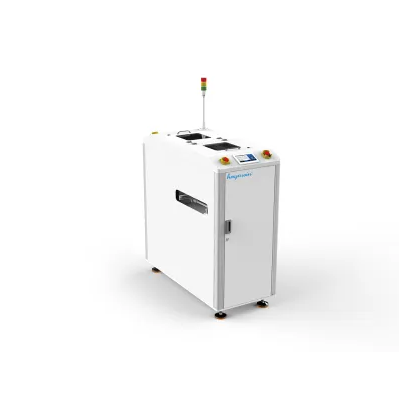What is a vacuum loader?
In industrial and manufacturing settings, the efficient handling and transportation of bulk materials are crucial aspects of operational success. Vacuum loaders, also known as vacuum conveying systems, have emerged as indispensable tools in these environments, streamlining the process of material transfer. In this article, we explore the intricacies of vacuum loaders, unraveling their purpose, components, and diverse applications.
1. Defining Vacuum Loaders:
1.1 Principle of Operation:
Vacuum loaders operate on the principle of suction, utilizing negative pressure or vacuum to convey materials from one location to another. This method of material transfer is particularly effective for handling powders, granules, and other free-flowing bulk materials.
1.2 Components:
The primary components of a vacuum loader include a vacuum pump, conveying pipeline, material receiver (hopper), filters, and control systems. These elements work in tandem to create a reliable and efficient material conveying system.
2. Applications of Vacuum Loaders:
2.1 Plastics Industry:
Vacuum loaders are extensively used in the plastics industry for conveying plastic resins and granules. They facilitate the automated loading of materials into processing machines, reducing manual handling and improving production efficiency.
2.2 Food Processing:
In the food industry, vacuum loaders play a vital role in transferring ingredients such as flour, sugar, and spices. Their hygienic design and ability to prevent material contamination make them well-suited for food processing applications.
2.3 Pharmaceuticals:
Pharmaceutical manufacturing often involves the precise handling of powders and granules. Vacuum loaders contribute to the automation of material transfer, ensuring accuracy and minimizing the risk of contamination.
2.4 Chemical Processing:
Vacuum loaders are employed in the chemical industry for the safe and efficient transfer of various powdered or granular chemicals. Their closed-loop systems help prevent material spillage and exposure to the environment.
2.5 Packaging:
In packaging operations, vacuum loaders assist in conveying bulk materials to packaging machines. This enhances the speed and accuracy of the packaging process, especially in industries dealing with powdered products.
3. Advantages of Vacuum Loaders:
3.1 Efficiency:
Vacuum loaders significantly improve material transfer efficiency by automating the process. This reduces manual labor requirements and enhances overall productivity.
3.2 Dust Control:
The closed-loop design of vacuum loaders helps control dust emissions during material transfer. This is particularly important for industries with strict hygiene and safety standards.
3.3 Versatility:
Vacuum loaders are versatile and can be adapted to convey a wide range of materials, including powders, granules, and small particles. They offer flexibility in handling different types of bulk materials.
4. Considerations for Usage:
4.1 Material Compatibility:
The material compatibility of the vacuum loader components with the substances being conveyed is crucial. Selecting the appropriate materials ensures longevity and reliability.
4.2 System Design:
The design of the vacuum conveying system should be tailored to the specific requirements of the application. Factors such as conveying distance, material flow characteristics, and transfer rates need careful consideration.
In conclusion, vacuum loaders stand as essential tools in the realm of material handling, offering efficiency, dust control, and versatility across various industries. Their ability to automate the transfer of bulk materials enhances productivity while maintaining a clean and controlled working environment. As industries continue to evolve, the role of vacuum loaders in streamlining material conveyance processes is likely to become even more pronounced, contributing to the ongoing advancements in manufacturing and production efficiency.
1108
0
0



Comments
All Comments (0)